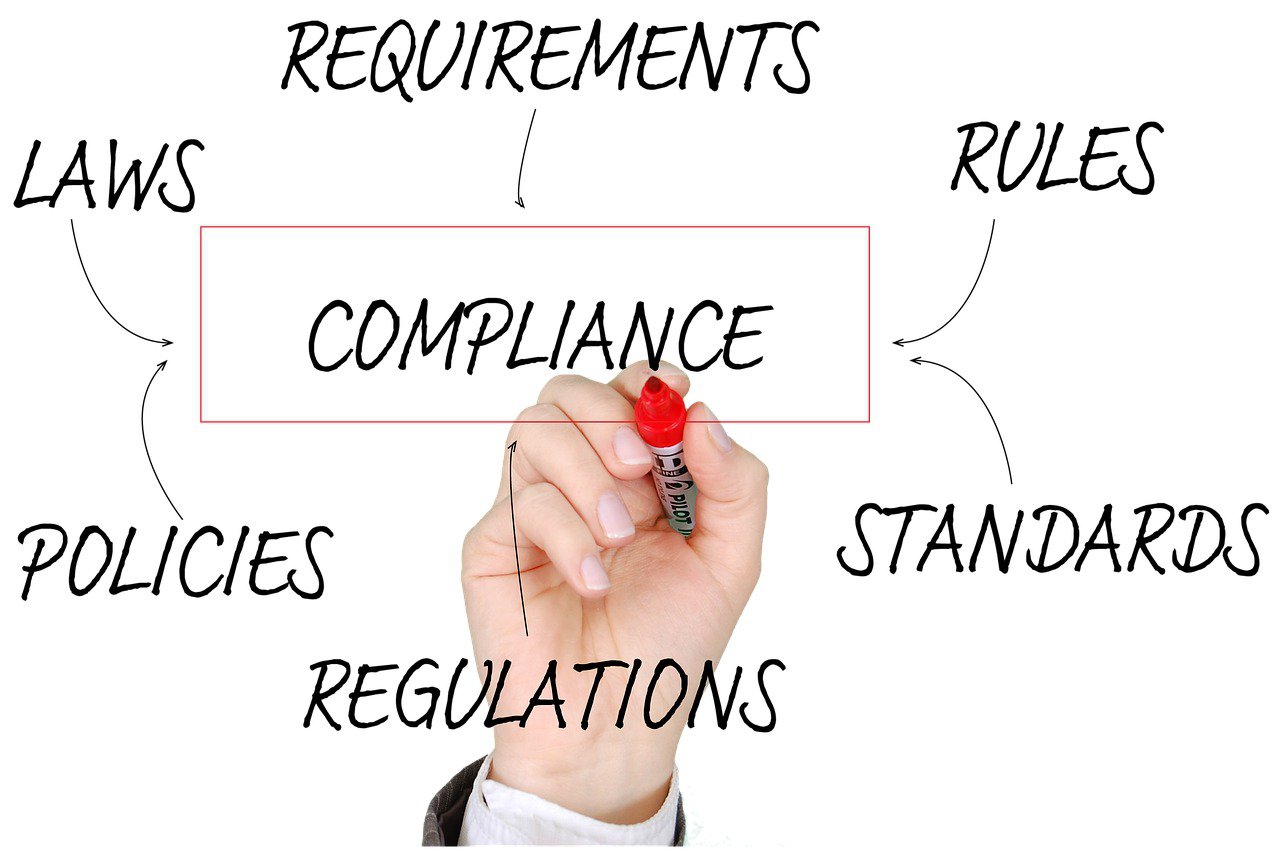Business process automation is a smart way to mature your operations, saving time, reducing labor costs and freeing up valuable resources while enhancing operational outcomes. But it’s not all perfect. The IT infrastructure on which these automated processes run turns your organization into an attractive target for cybercriminals. In 2024 alone, about 50% of businesses experienced a cyberattack. Regular IT security audits provide a proactive solution. Find out what is an IT security audit, how to perform one and the best implementation practices for 2025.
What Is an IT Security Audit?
An IT security audit, also known as a cyber or software security audit, is a detailed, systematic assessment of an organization’s IT infrastructure, policies and practices. It identifies vulnerabilities, verifies compliance with internal and external policies and builds stakeholder trust.
In other words, a software security audit tells you how well your IT systems are protected against threats and identifies weaknesses that attackers could exploit, facilitating risk mitigation. The audit usually looks into:
- Technical IT Infrastructure: Such as network security, servers, database security, and cloud infrastructure
- Application-Level Resources: Including software and mobile apps
- Physical Infrastructure: Such as surveillance systems, access controls, and environmental safeguards
Why Are IT Security Audits Important?
Security audits are a necessity in today’s increasingly complex business environment, facilitating several key elements of cybersecurity.
Risk Mitigation
Cybersecurity audits dig deep into your IT environment’s tangible and non-tangible parts, bringing to light vulnerabilities you may not even know. This allows your organization to address these issues proactively, preventing data breaches and related risks such as the possible financial and reputational damage.
Compliance
IT audits break down IT environments into manageable parts such as network security, user access management and data handling procedures. This step-by-step examination ensures that no area relevant to compliance with regulations is overlooked.
Furthermore, the resulting documentation (findings, recommendations and implemented changes) proves that all critical areas have been assessed and proper controls are in place.
Stakeholder Trust
Your clients and investors demand assurance that their data and investments are protected. Performing cybersecurity audits proves your commitment to these demands, thus cultivating trust.
Audit findings also prove that security controls are in place and effective. This further solidifies stakeholder confidence in your organization by showing that your business is continually working to address identified weaknesses and improve its security posture. Furthermore, the steps you take to remediate identified risks demonstrate accountability, enhancing stakeholder trust in your organization.

How To Perform an IT Security Audit
For an effective IT security audit, you must follow a structured approach to ensure all critical areas are examined and actionable insights are gained. Here’s a practical six-step approach to guide you through the process.
1. Planning & Scoping
A standard IT environment for most organizations comprises physical infrastructure (servers, network devices, workstations, data centers), technical infrastructure (operating systems, network protocols, security tools like firewalls and intrusion detection systems) and applications (both custom-built and off-the-shelf software used for business processes).
Trying to audit this entire environment simultaneously is like reading a whole library in a single day. You might touch every book, but you won’t truly understand any content. Such a superficial approach means essential issues will get lost in a sea of less critical observations.
Therefore, define precisely what you’re auditing for a successful and impactful IT security audit. Here are tips to accomplish this step:
- Define audit objectives. For instance, are you performing the audit to validate compliance with regulations or to address specific security concerns?
- Establish clear goals. What outcomes are you expecting from the audit?
- Identify key stakeholders and secure executive buy-in to ensure necessary resources and cooperation.
- Determine the audit approach and methodology.
- Establish timelines and resources.
2. Information Gathering
Once you establish the scope, your next stop should be information gathering. Collect and compile critical documentation and data such as:
- Network diagrams: Visual representations of the network infrastructure, including devices, connections and security zones
- System configurations: Details about the hardware and software configurations of servers, workstations and other critical systems
- Security policies and procedures: Formal documents outlining the organization’s security rules, standards and operational processes
- Access logs: Records of user activity and system access attempts, providing insights into who is accessing what and when
- Vulnerability scan reports: Output from automated tools identifying known security weaknesses in systems and applications
- Incident reports: Documentation of past security incidents, including their causes, impact and remediation efforts
- Asset inventories: Comprehensive lists of all IT assets, including hardware, software and data
Gathering detailed information enhances your auditor’s understanding of the security posture of in-scope processes and polices. This enables them to determine the specific vulnerabilities to test for, the policies and procedures they need to review in detail and even which individuals to interview.
This step allows auditors to better communicate the identified vulnerabilities with other organization personnel. They can ask more informed questions, understand the context of responses, and tailor their recommendations to the specific needs and challenges of the organization.
3. Risk Assessment
Analyze the gathered information to identify potential vulnerabilities. When doing so, remember that not all risks are created equal. For instance, the risk a publicly accessible web server running on an outdated operating system poses to an organization is higher than the risk created by an internal employee using a non-standard desktop.
Consequently, rank the threats you identify based on their likelihood of occurrence and business impact. Prioritize high-risk assets over lower value targets to ensure resources are channeled toward the most significant vulnerabilities first. Examples of threats to consider during this assessment include:
- Phishing attacks
- Malware infections
- Zero-day exploits
- Insider threats
4. Security Testing
This step of the IT audit process is where you determine if the identified risks are actual threats. Channel your efforts and resources to systems and controls that protect your most critical assets.
Use automated and manual security testing techniques to achieve comprehensive coverage and accurate results in your security evaluation. For automated security testing, consider investing in scanning tools like Nessus, Qualys, or OpenVAS to assess the potential likelihood and impact of the earlier ranked risks. Supplement these tools with targeted manual penetration tests that simulate attack scenarios that automated tools might miss.
5. Reporting
After confirming that the earlier identified and ranked risks pose a security risk to your IT environment, compile a report detailing your findings. Given that it’ll serve as a baseline for progress tracking in subsequent remediation activities and compliance evidence, your audit report should at a minimum include:
- An Executive Summary: Include an overview of the audit’s objectives, scope, key findings and overall security posture. This will allow senior management officers who may not have the time to read the entire report to quickly understand the organization’s security health and make informed decisions about resource allocation.
- Identified Vulnerabilities: Detail the specific security weaknesses identified during risk analysis and security testing, and their implications. Clearly describe each vulnerability and the particular system, application or process where it exists. Include evidence supporting each finding, such as screenshots and logs to validate your conclusions.
- Compliance Gaps: Instances where the organization’s practices do not align with relevant internal policies, industry standards or regulatory requirements.
- The Methodology: Describe the audit approach, the framework and standards you used (e.g., NIST CSF, ISO 27001), security tests performed and tools utilized.
- Remediation Steps: For each risk identified, provide specific remediation steps with estimated effort, resource requirements, impact and timelines.
Management and stakeholders rely on the audit report to understand the organization’s security posture. So be sure to document findings in terms that both technical and non-technical stakeholders can understand.
For instance, provide a high-level summary for executives and generate a separate detailed technical report for IT teams. Additionally, each vulnerability can be categorized by severity using metrics like CVSS scores to inform resource allocation.
6. Remediation & Follow-Up
Finally, it’s time to address the security risks identified. The specific steps will depend on each vulnerability identified, but effective remediation generally involves:
- Patching software
- System reconfiguration
- Policy updates
Ensure you assign ownership for each task with specific timelines and deliverables to promote accountability and timely completion of the necessary improvements. Moreover, plan follow-up assessments, including re-audits to confirm that the remediation strategies you developed efficiently addressed the identified vulnerabilities and that they haven’t introduced new risks.
Best Practices for IT Security Audits 2025
To ensure your audits keep your organization ahead of threats, consider implementing the following best practices:
Automate Compliance
Today’s IT environments are incredibly complex and interconnected. Manually auditing them is time-consuming and resource-intensive.
A manual approach also introduces human error, which defeats the very purpose of the IT security audit. This is because human auditors, despite their professional expertise and experience, are susceptible to oversights, biases and fatigue, especially when dealing with large volumes of data and complex processes.
To eliminate this risk, automate IT security audits using reputable governance, risk, and compliance software like Onspring. These systems continually monitor your security controls, enabling your organization to respond to security and compliance risks as they emerge.
Simultaneously, they free up your human auditors to focus on the strategic tasks. Moreover, these platforms evolve your defenses based on actual attack patterns in your environment. This approach redirects resources to the most pressing threats. More importantly, automation ensures compliance scales with your business and not against it.
Third-Party Audits
External auditors bring fresh perspectives free of organizational blind spots or internal politics to software security audits. Consequently, they’re better able to identify vulnerabilities that internal teams might overlook.
Because they bring unbiased perspectives, their assessments enhance stakeholder, regulator and customer confidence in the organization’s security posture. Therefore, consider enlisting a third-party solution to perform objective cybersecurity audits.
Employee Training
While cybersecurity audits are incredibly effective at unearthing risks, it’s almost impossible to eliminate all human-related risks in your IT setup. Some cyberthreat vectors exploit human psychology and behavior through social engineering. For example, phishing emails trick users into revealing sensitive information by capitalizing on their trust in legitimate email sources.
Organize training programs to raise employee awareness on such vectors and prevent your team from falling victim to such risks, as they may expose your entire organization. This training should include practical exercises such as phishing simulations to educate employees on recognizing and reporting social engineering attempts.
Create trackable security behavior metrics and incorporate them into performance evaluations. Additionally, reward employees who report risks to build an organization-wide culture of vigilance.

Integrate Incident Response Preparedness in Your Cybersecurity Audits
Even with the most advanced IT security measures, the unfortunate reality is that even seemingly bulletproof systems fail. This is because just as cyber-security evolves, so do cyber threats.
To secure your organization against the changing threats, incorporate incident response (IR) into your IT security audit plans. This will enable your organization to react swiftly and effectively to unforeseen risks, thus minimizing damage and downtime.
Here are tips for seamless integration:
- Formulate an IR Plan: Explain the essence of an IR plan to your seniors to secure executive buy-in and sponsorship. Once you have approval, create a high-level incident response policy outlining potential security incidents and step-by-step response procedures.
- Create an IR Team: Formulate a designated IR team by picking key personnel from various departments, including IT, security and other relevant business units. Define and assign the roles and responsibilities for each individual within the IR.
- Establish Communication Plan: Define internal and external communication protocols to ensure the IR team can respond swiftly to new security threats as they emerge. Establish procedures for evidence collection, preservation and documentation as well.
Safeguard Business Process Automation With IT Security Audits
IT security audits are a necessity in this ever-evolving digital threat landscape. They allow organizations to effectively identify and secure IT infrastructure from the increasingly sophisticated cyber-threat vectors. This ultimately empowers them to fully harness the power of automation, minus the associated risks.
Integrating GRC software into these audits further enhances efficiency by providing real-time threat visibility. Ready to automate your security audits? Request an Onspring demo today to test how it works with your current software security audit processes.



